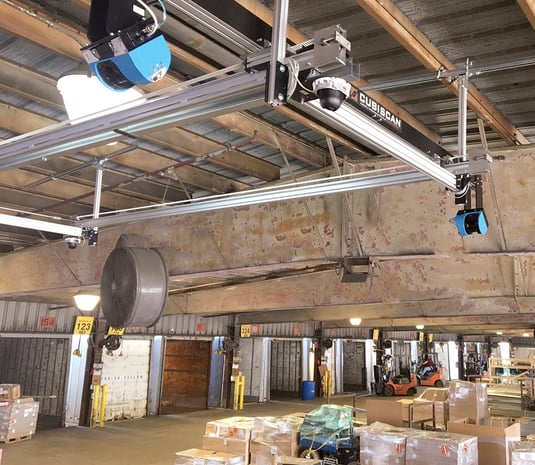REDWOOD LOGIN
Redwood PortalLTL
SCS
SCS Support
Rockfarm
 Those who ship via LTL carriers may have noticed an uptick in pricing on their shipping invoices. While the driver shortage and rising fuel costs are a major contributing factor, the inclusion of dimension-based equipment is showing up on many shipper’s invoices. But, it’s not because of the LTL carriers need to recoup their investment dollars – but actually, the shipper’s initial estimates based on their measurements are incorrect. Many carriers are starting to use dimensioners or dimension scanning machines that are designed to help provide accurate load measurements, which is directly impacting LTL cost.
Those who ship via LTL carriers may have noticed an uptick in pricing on their shipping invoices. While the driver shortage and rising fuel costs are a major contributing factor, the inclusion of dimension-based equipment is showing up on many shipper’s invoices. But, it’s not because of the LTL carriers need to recoup their investment dollars – but actually, the shipper’s initial estimates based on their measurements are incorrect. Many carriers are starting to use dimensioners or dimension scanning machines that are designed to help provide accurate load measurements, which is directly impacting LTL cost.
There are a few reasons why the leading carriers (and their competitors) are beginning to integrate this technology into their daily operations. Let’s discuss a few of the reasons why dimension-based systems are expanding with carriers and some proactive shippers as well.
A recent report indicated that carrier-pioneers including UPS Freight, Fed Ex Freight, YRC, and others are rapidly expanding their purchase and use of dimension-scanning machines at their depots. In fact, over the past three years, the use of dimension-based scanning equipment has increased 300 percent, which has improved the consistency of LTL cost for the measurements. There are several reasons why the top 20 carriers who represent 90 percent of the overall LTL operation in the United States are using this technology.
• Improves Carrier Efficiency: If there is an enemy to the LTL carrier – it’s empty space inside the cargo container. The use of dimensioners has vastly improved the efficiency of each load, ensuring that each truck leaves with an optimal capacity, for maximum profitability and improved service.
• Customer Service is Improved: Before dimension-scanners became popular, shippers would typically receive a shipping estimate, which would be significantly different than the final bill they received. In most instances, the shipper’s cost is more than the original estimation. This methodology helped to create a negative stereotype with many LTL carriers and thus, reduce customer service levels. By using the dimensioner, the LTL carrier can provide the shipper with more accurate estimates for their freight, providing better transparency and working on improving the customer experience.
• Improves Delivery Time: When an LTL route is dispatched from a terminal, it’s going to be optimized for maximum efficiency. This doesn’t always mean loading the truck to maximum capacity, however. Many carriers are finding that the dimension-based technology is helping them to plan delivery routes that are shorter and optimized for quicker delivery.
Forecasting is a critical function of any business. This is arguably the biggest impact that the use of dimension-scanners has on the shipper – but in a positive way. The integration of dimension-based scanning equipment, used by carriers provides the shipper with more accurate estimations for shipping costs, which they can use to help budget for LTL shipping expenses.
As noted above, the LTL carriers are also seeing a reduction in the delivery time. When the shipper’s customer is receiving their freight earlier than expected, it improves customer service – but also makes the shipper look good in the eyes of their customer. As more carriers begin to integrate dimension-scanners at more depots and terminals, more shippers will discover that their use is actually in their best interest.
Dimension-scanning equipment will become commonplace with carriers in multiple modes – not just the LTL industry. There are a few ways that carriers can assist their customers through the integration of this technology that will reduce communication errors, improve shipping estimates, and improve customer service.
• Keep customers well informed: Education is the key to the effective integration of any new technology. This includes communicating with shippers on how these systems work, and what they can do to improve their freight optimization.
• Maintain the equipment for accurate measurements: Dimension-scanning equipment is professionally built and designed to withstand frequent use. However, they also require constant calibration and routine service to provide accurate measurements. The worst thing LTL carriers could do is provide false estimations to their customers due to faulty equipment – as this would widen the already fragile trust factor between carriers and shippers.
The best way for shippers to plan for the inevitable integration of dimension-scanning systems is to document the rates that each LTL carrier is giving them for each shipment sent. If you are a shipper that is new to logistics or just not quite certain how LTL cost can impact your operation, contact a proven 3PL that understands this technology, so they can help you navigate the complex world of LTL logistics.